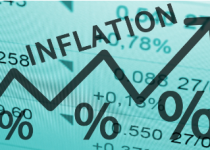INVESTMENT ANALYSIS, ACCELERATOR THEORY AND AGGREGATE LEVEL OF EMPLOYMENT
INVESTMENT ANALYSIS, ACCELERATOR THEORY AND AGGREGATE LEVEL OF EMPLOYMENT
Definition of Investment. In literature, investment has been considered as the act of producing goods that are not for
immediate consumption, goods, inventory and residential housing. Investment, like saving, is the amount of the economy’s product that is not consumed. Also, investment is that part of the economy’s output that takes the form of new structures, producer’s new durables equipment and change in inventories. Thus investment can be regarded as the addition to the stock of new capital goods and to inventories which include raw materials, work in progress and stocks of unsold goods.
Also, investment may be gross or net. Gross investment in any period equals the amount of capital used up during that period and, hence, there is no change in the stock of capital. If we deduct depreciation or capital consumption allowance for the use of machines and equipment from total investment (gross investment) in an economy what we obtain is net investment. When gross investment exceeds depreciation allowance, the difference equals net investment, and, if the former is less than the latter, then the difference equals negative net investment or disinvestment. Thus net investment can be viewed as an addition to the existing stock of capital and it is considered to be the most volatile component of GDP
Investment Expenditure
Investment expenditure is the expenditure made by firms on goods produced not for
their present use but for their use in the future. In economics, investment expenditure comprises business fixed investment (new factories and machinery), residential investment (new houses, apartments and condominiums) and inventory investment (the change in the value of unsold goods). There are two types of investment: autonomous investment and induced investment.
Autonomous Investment
Autonomous investment is that investment that occurs without the influence of national income. It is considered as investment that is independent of national income. Its dominants include interest rates, business sentiment, business costs, capital costs, corporate income tax, technological advancements and the availability of credit. In examining the following diagram, the
autonomous investment function is a horizontal line that intercepts the investment axis.
Induced investment
Induced investment is functionally related to the level of Gross Domestic Product. Induced investment is that investment that is “induced” because of increased business activity, Induced investment means that investment that is caused by increased levels of GDP and it is represented by the upward slopping section of the graph in figure 5.1
Determinants of Investment
Several factors have been considered as determinants of investment but the following have have identified as most important.:
1. Increased optimism among investors: These are the attitudes, beliefs or state of mind of investors about the nature of economic events. Expectations play important role in determining economic behaviour. A firm or an investor may select a price level of output or investment alternative based on future expectations.
2. The price and productivity of capital goods. If the capital is cheap with high productivity it can bring about high rate of investment and vice versa.
3. The availability of profits earned by firms for re-investment : Increase in net profit of firms, can provide opportunity for re-investment by investors as this will
provide cheap fund for investment purposes.
4. A change in technology: A favourable technological change will shift the MEC
schedule to the right and increase the volume of investment even if the rate of interest remains constant.
5. Government policy: Both fiscal and monetary policy of government affects the
level of investment to a great extent. Fiscal policies such as taxation can shape the
direction of investment. So also does the monetary policy such as preferential
credit
Marginal Efficiency of Capital (MEC)
The MEC is the rate of discount which equates the present value of a series of cash flows obtainable from an income-earning asset like a machine over its entire economic life to the cost of the machine. It is the rate of return at which a project is expected to break even. For instance, when a man buys an investment or capital-asset, he purchases the right to the series of prospective returns, which he expects to obtain from selling its output, after deducting the running expenses of obtaining that output, during the life of the asset.With series of annuities Q, Q,,… Q, it is convenient to call the prospective yield of the investment. Against the prospective yield of the investment, we have the supply price of the capital-asset, means that not the market-price at which an asset of the type in question can actually be purchased in the market, but the price which would just induce a new manufacturer newly to produce an additional unit of such assets, i.e. what is sometimes called its replacement cost.
The relation between the prospective yield of a capital-asset and its supply price or replacement cost, i.e. the relation between the prospective yield of one more unit of that type of capital and the cost of producing that unit, furnishes us with the marginal efficiency of capital of that type. More precisely, we can define the marginal efficiency of capital as being equal to that rate of discount which would make the present value of the series of annuities given by the returns expected from the capital-asset during its life just equal to its supply price. This gives us the marginal efficiencies of particular types of capital-assets. The greatest of these marginal efficiencies can then be regarded as the marginal efficiency of capital in general.
MEC and Rate of Interest
The MEC and the rate of interest are the two important factors which affect the volume of new investment in a country. An investor while making a new investment weighs the MEC of new investment against the prevailing rate of interest. As long as the MEC is higher than the rate of interest, the investment will be made till the MEC and the rate of interest are equalized.
For example, if the rate of interest is 7%, the induced investment will continue to be made till the MEC and the rate of interest are equalized. At 7% rate of interest, the new investment will be N40 billion. In case the rate of interest comes down to 2%, the new investment in capital assets will be N100 billion. In summary, if investment is to be increased in the country, either the rate of interest should go down or MEC should increase.
The Accelerator Principle
The principle explains the relationship between investment and change in demand or change in income. According to the theory, investment is related to change in national income. When national income is increasing, it is necessary to invest in order to increase the capacity to produce consumer goods to meet consumer demand. When income is falling, it is not necessary to replace old capital as it wears out, let alone invest in new capital.
Limitations of accelerator Principle
1. An increase in sales may be expected to be temporary. To this effect, new investment may not take place since overtime work or extra shifts would lead to expansion of the level of output. Hence the accelerator principle is not justified.
2. The accelerator principle does not provide for the fact that investment at any
point in time can be restricted by a change in the capital invested.
3. The definition of investment by the accelerator principle emphasises capital widening, but is silent on capital deepening as it assumes capital-outputration to
be fixed.
Aggregate Demand
The concept of aggregate demand (AD) refers to the total demand for goods and services in an economy. AD is related to the total expenditure flow in an economy in a given period. It consists of the following:
1. Consumption demand by the households (C)
2. Investment demand, i.e., demand for capital goods (1) by the business firms.
3. Government expenditure (G)
4. Net income from abroad (X-M)
Thus symbolically,
AD C+1+G+(X-M)
Keynes’s theory of aggregate demand
According to Keynes full employment is not a normal situation as stated in the Classical theory. He argued that economy’s equilibrium level of output and employment may not always correspond to the full employment level of income. It is possible to have macroeconomic equilibrium at less than full employment. If current level of aggregate demand (expenditure) is not adequate to purchase all the goods produced in the economy (i. e a situation of excess supply) then output will be cut back to match the level of aggregate demand.
Keynes’s theory of the determination of equilibrium income and employment focuses on the relationship between aggregate
demands (AD) and aggregate supply (AS). According to him, equilibrium employment (income) is determined by the level of aggregate demand (AD) in the economy, given the level of aggregate supply (AS). Thus, the equilibrium level of employment is the level at which aggregate supply is consistent with the current level of aggregate demand. The theory believes that “demand creates its own supply” rather than the classical theory claim of “supply creates its own demand”.
Aggregate demand function.
Aggregate demand or what is called aggregate demand price is the amount of total receipts which all the firms expect to receive from the sale of output produced by a given number of workers employed. Aggregate demand increases with increase in the number of workers employed.
The aggregate demand function curve is a rising curve It can be suppose that total expected receipts is D,L, at OL, level of employment. Total expected receipts increase to D.L, with increase in the level of employment to OL,, OL, is the full employment level. Initially the aggregate demand function (ADF) rises sharply as increase in the number of employment leads to increase in society’s expenditure, thereby, increasing producer’s expected sales receipts. There is not much increase in employment, income, expenditure and therefore the producer’s expected sales, receipts as the economy reaches near full-employment. The ADF curve becomes perfectly elastic (horizontal) as the economy reaches near full-employment.
Aggregate supply function
Aggregate supply is determined by physical and technical conditions of production. However, these conditions remain constant in the short run. As such, given the technical conditions, output in the short run can be increases only by increase employment of labour.
Aggregate supply or what is called aggregate supply price is the amount of total receipts which all the firms must expect to receive from the sale of output produced by a given number of workers employed. In other words, aggregate supply price is the total cost of production incurred by producers by employing a certain given number of workers. Obviously, aggregate supply price increases with increase in the number of workers employed. The aggregate supply function curve is a rising curve and at full employment (OL) it becomes perfectly inelastic (vertical)
It can be suppose that aggregate supply price or the cost of production is S,L, at OL, level of employment. It increases to S,L, with increase in the level of employment to OL,. Initially, the aggregate supply function (ASF) rises slowly as labour is abundant thereby leading to slow increase in the cost of production. Labour cost rises sharply as the economy reaches near full-employment. The ASF therefore rises sharply and at full employment (OL) it becomes perfectly inelastic (vertical).
Determination of equilibrium level of employment
According to Keynes equilibrium level of employment (income) in the short run is determined by the level of effective demand. The higher the level of effective demand, the greater would be the level of income and employment and vice versa.
As discussed above, the ADF shows the amount of total receipts which all the firms expect to receive from the sale of output produced by a given number of workers employed and the ASF shows the amount of total receipts which all the firms must expect to receive from the sale of output produced by a given number of workers employed. Entrepreneurs expand output as long as there are opportunities to make profits.
It can be seen that up to OL level of employment, aggregate demand price is greater than aggregate supply price (ADF> ASF). Producers expect greater returns than the cost of production. As such, producers expand output up to OL level of employment. Thus, at any level of employment up to OL, there would be expansionary tendency in the economy and therefore a rise in the level of employment.
Beyond OL level of employment, aggregate demand price is less than aggregate supply price (ADF< ASF). Producers expect less returns than the cost of production. As such, producers prefer to cut down output. Thus at any level of employment beyond OL, there would be contractionary tendency in the economy and therefore fall in the level of employment.
At OL level of employment aggregate demand price equals aggregate supply price (ADF = ASF). Now there is no tendency towards economic expansion or contraction. Thus OL is the equilibrium level of employment. Point ‘E’ is called the point of effective demand. It represents that level of aggregate demand price that is equal to aggregate supply price and thus reaches short run equilibrium position.
It can be seen that equilibrium point ‘E’ is established at less-than-full employment equilibrium and there is LL, amount of involuntary unemployment in the economy. It is important to note that according to Keynes, this unemployment is due to deficiency of aggregate demand. At full employment level, there exists a gap between the full employment level of aggregate supply price and the corresponding level of aggregate demand price.
Role of fiscal policy in achieving full-employment equilibrium According to Keynes, full-employment can be achieved by removing the gap between aggregate supply price and aggregate demand price. However, he rejected the Pigouvian wage-cut solution to pull the ASF downwards to achieve full-employment. This, according to him, would further lower the aggregate demand, if the income of potential customers is reduced. The economy, in short, will be caught in a vicious circle of high unemployment and low demand. On the other hand, the policy to push the ADF upwards will push the economy into a virtuous cycle of high demand and high employment.


